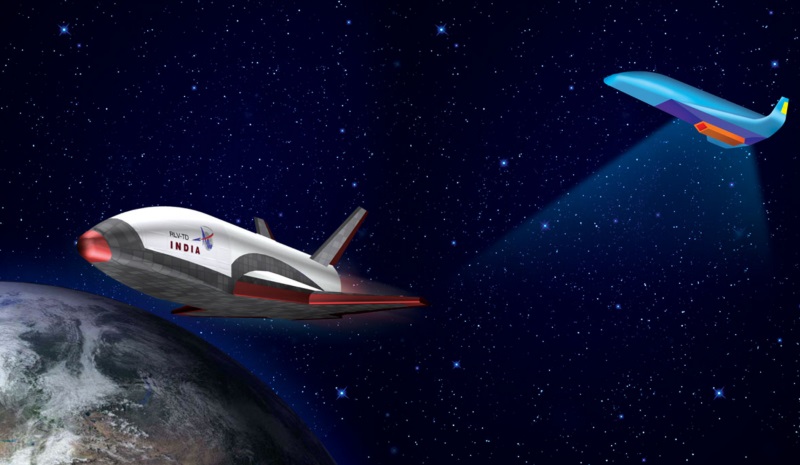- Home
- Science
- Science News
- Isro to Test Reusable Launch Vehicle in June
Isro to Test Reusable Launch Vehicle in June

"The winged vehicle, in the shape of an aircraft, is on way to Sriharikota for the maiden flight test in June from our spaceport there," Indian Space Research Organisation (Isro) chairman A.S. Kiran Kumar said at an Indian Air Force event Bengaluru.
Sriharikota in coastal Andhra Pradesh, is about 80km northeast of Chennai.
As the cost of access to space exploration and utilisation is expensive, the space agency has developed the two-stage-to-orbit reusable vehicle (RLV-TD) for reducing the cost of launching its future satellites.
It has completed various tests, including acoustics at the National Aerospace Laboratories (NAL) here to act as a flying test bed to evaluate its technologies such as hypersonic flight, autonomous landing, and powered cruise flight, using air-breathing propulsion.
"The vehicle will be flown up to 70 km and released for its re-entry into the atmosphere. It has to withstand the atmospheric pressure and heat friction while re-entering into the atmosphere," Kiran Kumar said at the ninth annual Air Chief Marshal L.M. Khatre lecture.
The space agency will develop the RLV technologies through hypersonic flight experiment, landing experiment, return flight experiment and scramjet propulsion experiment.
"As the prototype vehicle is one-sixth of the original size, it may not require our polar satellite launch vehicle (PSLV)," the Isro chief added.
The space agency is also working on the second version of the geosynchronous satellite launch vehicle (GSLV Mark-III) to carry four-tonne class satellites into the geostationary orbit, about 36,000 km above earth.
The first experimental flight of the heavy rocket was carried on December 18, 2014 to test its atmospheric phase.
Catch the latest from the Consumer Electronics Show on Gadgets 360, at our CES 2026 hub.
Related Stories
- Samsung Galaxy Unpacked 2025
- ChatGPT
- Redmi Note 14 Pro+
- iPhone 16
- Apple Vision Pro
- Oneplus 12
- OnePlus Nord CE 3 Lite 5G
- iPhone 13
- Xiaomi 14 Pro
- Oppo Find N3
- Tecno Spark Go (2023)
- Realme V30
- Best Phones Under 25000
- Samsung Galaxy S24 Series
- Cryptocurrency
- iQoo 12
- Samsung Galaxy S24 Ultra
- Giottus
- Samsung Galaxy Z Flip 5
- Apple 'Scary Fast'
- Housefull 5
- GoPro Hero 12 Black Review
- Invincible Season 2
- JioGlass
- HD Ready TV
- Laptop Under 50000
- Smartwatch Under 10000
- Latest Mobile Phones
- Compare Phones
- Honor Magic 8 RSR Porsche Design
- Honor Magic 8 Pro Air
- Infinix Note Edge
- Lava Blaze Duo 3
- Tecno Spark Go 3
- iQOO Z11 Turbo
- OPPO A6c
- Samsung Galaxy A07 5G
- Lenovo Yoga Slim 7x (2025)
- Lenovo Yoga Slim 7a
- Lenovo Idea Tab Plus
- Realme Pad 3
- Moto Watch
- Garmin Quatix 8 Pro
- Haier H5E Series
- Acerpure Nitro Z Series 100-inch QLED TV
- Asus ROG Ally
- Nintendo Switch Lite
- Haier 1.6 Ton 5 Star Inverter Split AC (HSU19G-MZAID5BN-INV)
- Haier 1.6 Ton 5 Star Inverter Split AC (HSU19G-MZAIM5BN-INV)







![[Sponsored] Haier C90 OLED TV | Dolby Vision IQ, 144Hz OLED and Google TV in Action](https://www.gadgets360.com/static/mobile/images/spacer.png)









